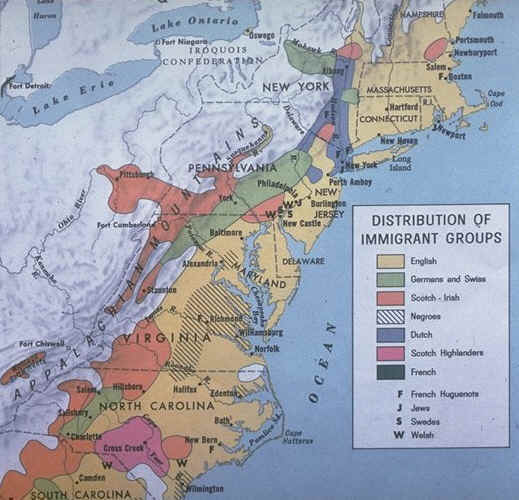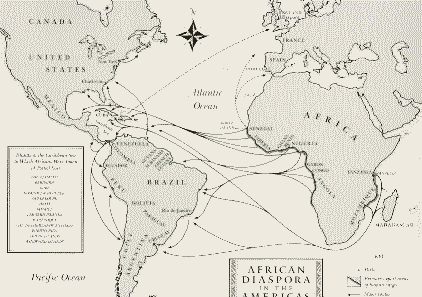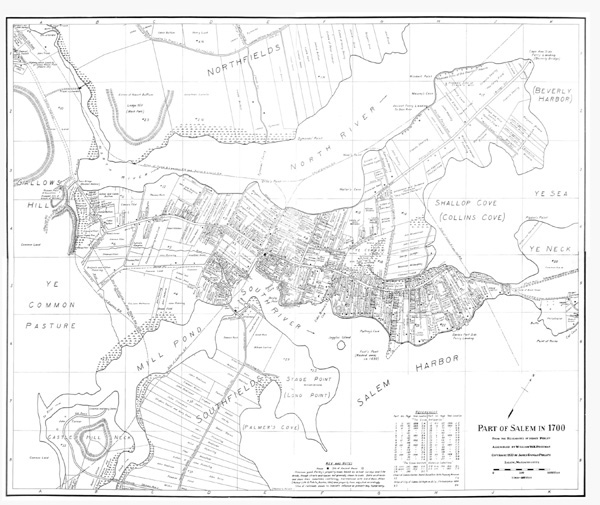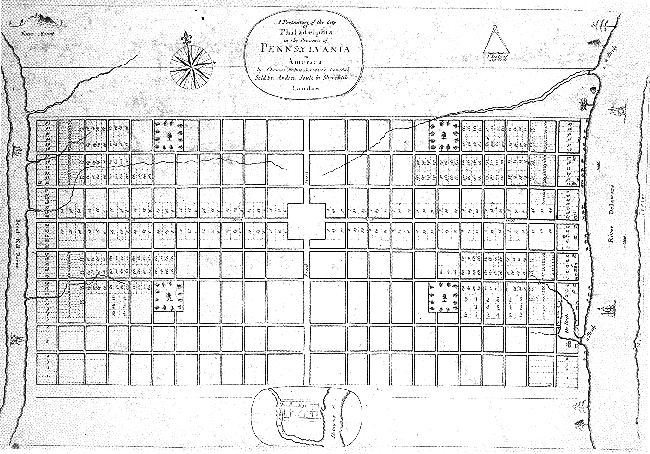
History 3090
Week 3 Colonial Society
Reading:
Short paper Topic: Use you readings to describe some aspect of English colonial society which surprised/intrigued you. Mercantilism as basis for European colonization? The Middle Passage? Puritan families? etc..... In other words -- how are you re-considering your understand of colonial society based on the social history scholarship?
Discussion: The Puritans of New England believed that God had called
them to the America to separate them from the corrupt world so they could
fulfill a special mission. Since that time, Americans have often believed
themselves to be a special people who are set apart from the other people of the
world. This idea is known as American Exceptionalism: the belief that the
factors which distinguish Americans from other people are more important than
the similarities which Americans have with other people. Scholars in the field
of American Studies have long been interested in the idea of American
Exceptionalism. Historians have asked, Did Americans develop a distinctive
culture? If so, When did Americans become a unique people? At what point did
immigrants from Europe and Africa forge a culture which differed significantly
from the culture of the Old World?

Of the 6.5 million immigrants who survived the crossing of the Atlantic and settled in the Western Hemisphere (North and South America) between 1492 and 1776, only 1 million were Europeans. The remaining 5.5 million were African. An average of 80 percent of these enslaved Africans—men, women, and children—were employed, mostly as field-workers. Women as well as children worked in some capacity. Only very young children (under six), the elderly, the sick, and the infirm escaped the day-to-day work routine.

THE ENGLISH COLONIAL POPULATION--Europeans and African Americans
| Year | Total Number | Year | Total Number |
| 1630 | 4, 0646 | 1700 | 250,888 |
| 1640 | 21,634 | 1710 | 331,711 |
| 1650 | 50,368 | 1720 | 466,185 |
| 1660 | 75,058 | 1730 | 629,445 |
| 1670 | 111,935 | 1740 | 905,563 |
| 1680 | 151,507 | 1750 | 1,170,760 |
| 1690 | 210,372 | 1760 | 1,593,625 |
| 1770 | 2,148,076 |
Source: http://www.e-connections.org/lesson1/colonial.pdf
By1750 British North America comprised the territory from the Atlantic Coast in the east to the Appalachians in the west, and from what is now Maine in the north to the border of Spanish Florida in the south. Hundreds of villages and towns and tens of thousands of farms were set in this natural landscape. These settlements were home to approximately 900,000 Europeans, 240,000 Africans, and 200,000 Native Americans. Except for the Native Americans, most of the population had arrived within the previous 50 years—in 1700 there were only 230,000 Europeans and 20,000 Africans.
Gradually, distinct colonial societies began to emerge in each of the three geographical areas of British North America: the South, New England, and the mid-Atlantic region. This social diversity was not the result of conscious planning but rather of the different origins and cultures of each of these populations and of the different agricultural opportunities offered by the natural environments in which people chose to live. The distinctive economic, religious, and cultural character of the colonial regions meant that their inhabitants lived in different ways. They built different types of houses, grew different crops, worshiped in different churches, and held different values. In 1750 there was not one "American" colonial society, but three regional social orders united by political bonds of the British Empire and the common English origins of the majority of their inhabitants.
Colonial Regions: The South New England Mid-Atlantic
Plantation South Brief description of the colonial South from U.S. State Department
The English settlers in the South—the colonies of Virginia, Maryland, North and South Carolina, and Georgia—came to North America looking primarily for economic gain. These immigrants took advantage of the region’s mild climate, which permitted the cultivation of many crops, and they established large plantations to produce tobacco and rice for export to markets in Europe. The wealthy planters who dominated the early settlements initially imported English indentured servants, who worked the planters’ lands for a specified period of time in return for their passage from England. After 1670 plantation owners increasingly turned to slave labor from Africa. By 1750 they had brought in so many Africans that the Southern colonies had become slave societies, sharply divided along the lines of race and class.

Slave labor on an indigo plantation, detail from Henry Mouzon,
Jr. & John Lodge, A map of the Parish of St. Stephen, in Craven County...
(London: 1773)
Source: Special Collections Library, Duke University
New England Brief description of colonial New England from U.S. State Department
A unique social order developed in New England, an area that included the colonies of Massachusetts, Connecticut, Rhode Island, and New Hampshire. English Puritans (Puritanism), who were members of a radical Protestant sect that followed the teachings of the Swiss theologian John Calvin, settled the region between 1620 and 1640, seeking freedom from religious persecution. A century later the descendants of these first settlers formed the overwhelming majority of the population and made New England the most culturally and religiously homogeneous of the three colonial regions. Because of its cold climate and rocky soils, New England was also the poorest region. Unlike the other regions of North America, its farms could not grow valuable export crops to ship to markets in Europe.

Small Size / Medium Size / Large Size
Map of Salem in 1700 by Sydney Perley
Mid-Atlantic Brief description of Mid-Atlantic colonies from U.S. State Department.
A very different society developed in the so-called mid-Atlantic colonies of Pennsylvania (which at that time also included Delaware), New York, and New Jersey. Immigrants from England and Wales who were members of the religious Society of Friends (more commonly known as Quakers) initially settled in Pennsylvania and parts of New Jersey, while Dutch settlers founded what would become New York and formed a majority of its population until 1700. After 1700 all of the mid-Atlantic colonies received tens of thousands of German and Scots-Irish immigrants and lesser numbers of French Protestants (Huguenots) and Irish Catholics. Thus, by 1750 many of the inhabitants of the mid-Atlantic colonies differed from one another in language and culture. Differences in ethnicity and religion—not homogeneity, as in New England—were the most striking features of the mid-Atlantic colonies.

William Penn first advertised the layout of his town in Thomas Holme's Portraiture of the City of Philadelphia, published in 1683. As one can see, Penn designed the city as a rectangular gridiron. Broad and High streets cross each other at 'centre square' and divide the city into four quadrants.
Source: http://xroads.virginia.edu/~CAP/PENN/pnplan.html
Some useful Internet sites:
Archiving Early American History:
http://www.earlyamerica.com/Workshop in Early American History (with images and documents)
http://loki.stockton.edu/~gilmorew/0colhis/c2wkshop.htmLinks to Sources for Early American History:
http://www.clements.umich.edu/Links/Histsub.htmlA timeline for the Colonial Period from the History Place: http://www.historyplace.com/unitedstates/revolution/rev-early.htm